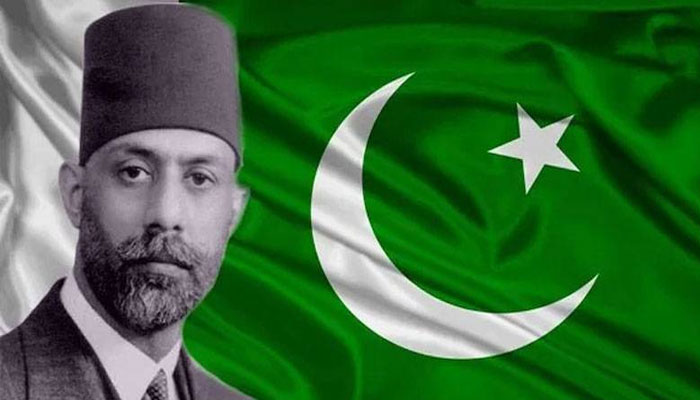Decoding “The Millat of Islam and the Menace of Indianism”: Rehmat Ali’s Response to Indian Nationalism
By: Prof. Imran Ismail Chohan
In the spring of 1940, when the Muslim League convened in Lahore to debate its historic resolution, Choudhry Rehmat Ali was sketching out an even wider vision for the Muslim world. At about this time his Pakistan National Movement convened in Karachi for its first significant meeting outside England. Rehmat Ali gave a speech which was subsequently published under the name “The Millat of Islam and the Menace of Indianism.”
In this pamphlet, Rehmat Ali outlined the ideological foundation of his movement when he declared that Muslims were a separate people: “Muslim, not Hindu; Pakistani, not Hindustani; and Asian, not Indian.” He did indeed feel that the subcontinent, commonly referred to as “India,” was nothing more than a temporary political conception that would someday shatter into a number of independent nations. He viewed Pakistan, Bengal, and Usmanistan (Hyderabad Deccan) not as places but as symbols of the spiritual and political pillars of Muslim nationhood. He believed that these columns had to be guarded to keep the millat, or universal Muslim community, alive.
Rehmat Ali had claimed that the Pakistan demand of 1933 was merely a stepping stone towards a greater cause to save the whole Muslim world from what he termed “Indianism.” He said that the next move was to save Bengal and consolidate Usmanistan. He dreamed of Bengal, and the adjacent region of Assam, as Bang-i-Islam, a Muslim-dominated region which should be given the right of self-determination. He also viewed Usmanistan, though a princely state and not included in British India, to be a part of the common Muslim heritage and urged its citizens to start a constitutional fight for their sovereignty’s recognition.
He advocated forming three autonomous Muslim states—Pakistan, Bengal, and Usmanistan—with a unified effort through a central alliance. In his opinion, the All-India Muslim League had become irrelevant. Muslims had already decided to dissociate their destiny from India. He then demanded that the League be superseded by an Alliance of the Nations of Pakistan, Bengal, and Usmanistan.
Although passionate and visionary, this address lacked the clarity and structure of Rehmat Ali’s earlier writings. It likely came from a spoken speech, relying more on rhetoric than on logic. Still, it was groundbreaking for expanding his earlier idea of Pakistan to include Bengal and Hyderabad as parallel Muslim homelands.
After that, Rehmat Ali said he initially employed the term “Bang” for Bengal and Assam in 1937, although no documents or maps of that period confirm it. Even his works in 1938 do not refer to it, which means that the idea evolved entirely after 1940.
Rehmat Ali’s ideas continued to evolve. In October 1942, he published another pamphlet titled The Millat and the Mission — Seven Commandments of Destiny for the Seventh Continent of Dinia. In it, he outlined an intricate plan for Muslim self-realization. His seven “commandments” were broad in scope:
- Reject the politics of minority status.
- Embrace distinct Muslim nationalism.
- Secure territory based on population.
- Strengthen individual Muslim nations.
- Bring them together in a Pak Commonwealth of Nations.
- Reconstitute India as Dinia, a continent of Muslim states.
- Stretch Dinia to form Pakasia, an intercontinental Muslim order.
He even established a deadline: establishment of Pakistan, Bang-i-Islam, and Usmanistan within fifteen years (1957), and then seven Muslim nations by the turn of the century. According to his dream, the subcontinent would gradually reform into one huge Islamic empire—initially Dinia, and then Pakasia.
By this point, Rehmat Ali had pushed his original idea of Pakistan to its furthest limits. His vision went beyond a single homeland to include a continent-wide revival of Islamic power. Similar to F.K. Khan Durrani’s earlier dream of Muslim resurgence through conquest, Rehmat Ali imagined achieving the same result through ideological and constitutional change.
His vision, expansive and unbending, frequently out of touch with political reality, indicated the extent of his ambition. He fantasized about reclaiming the centrality of Islam in South Asia. Though his designs went unrealized, his imagination had a lasting influence on the discourse regarding Muslim identity and nationhood during the twentieth century.






Comments are closed, but trackbacks and pingbacks are open.